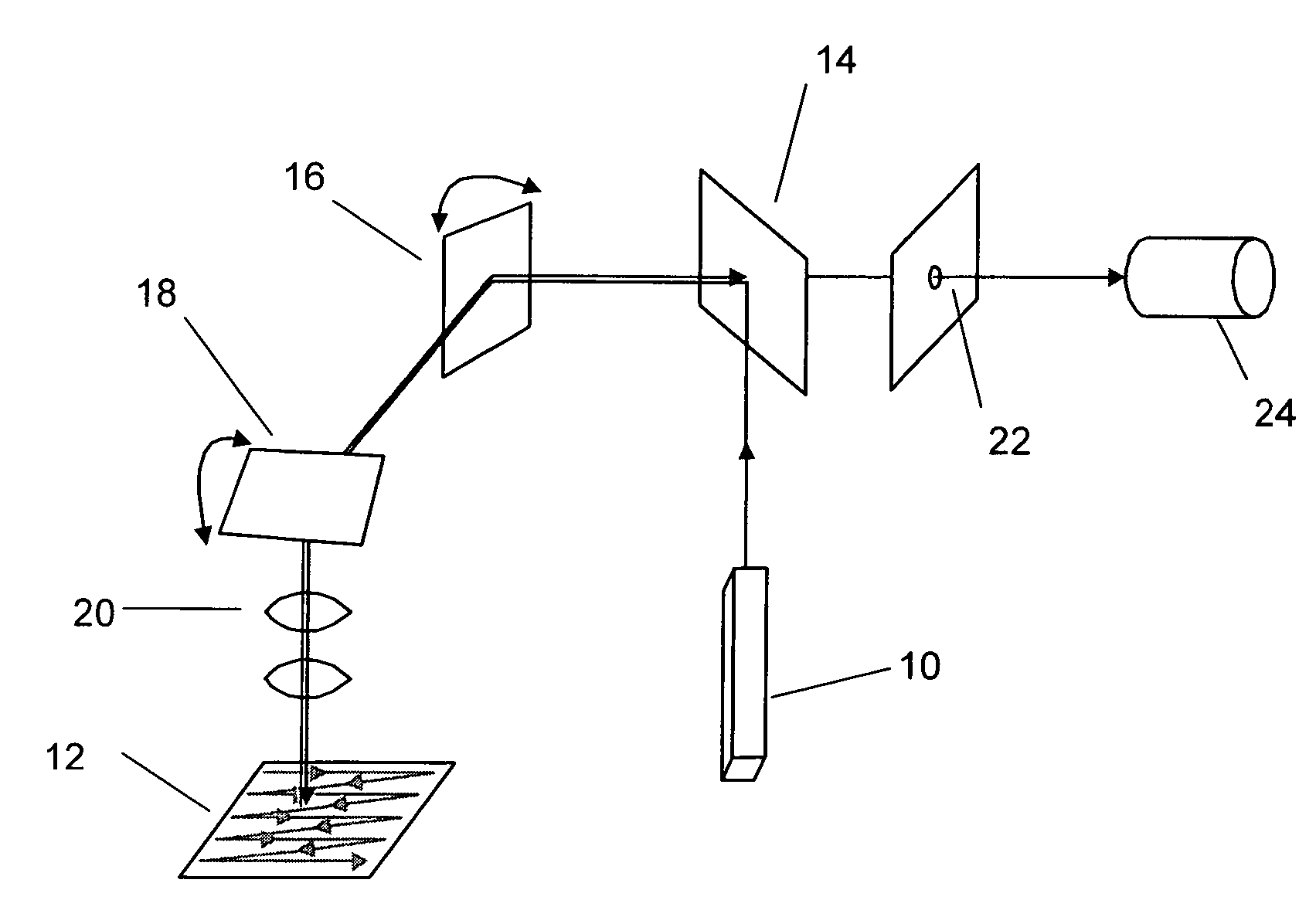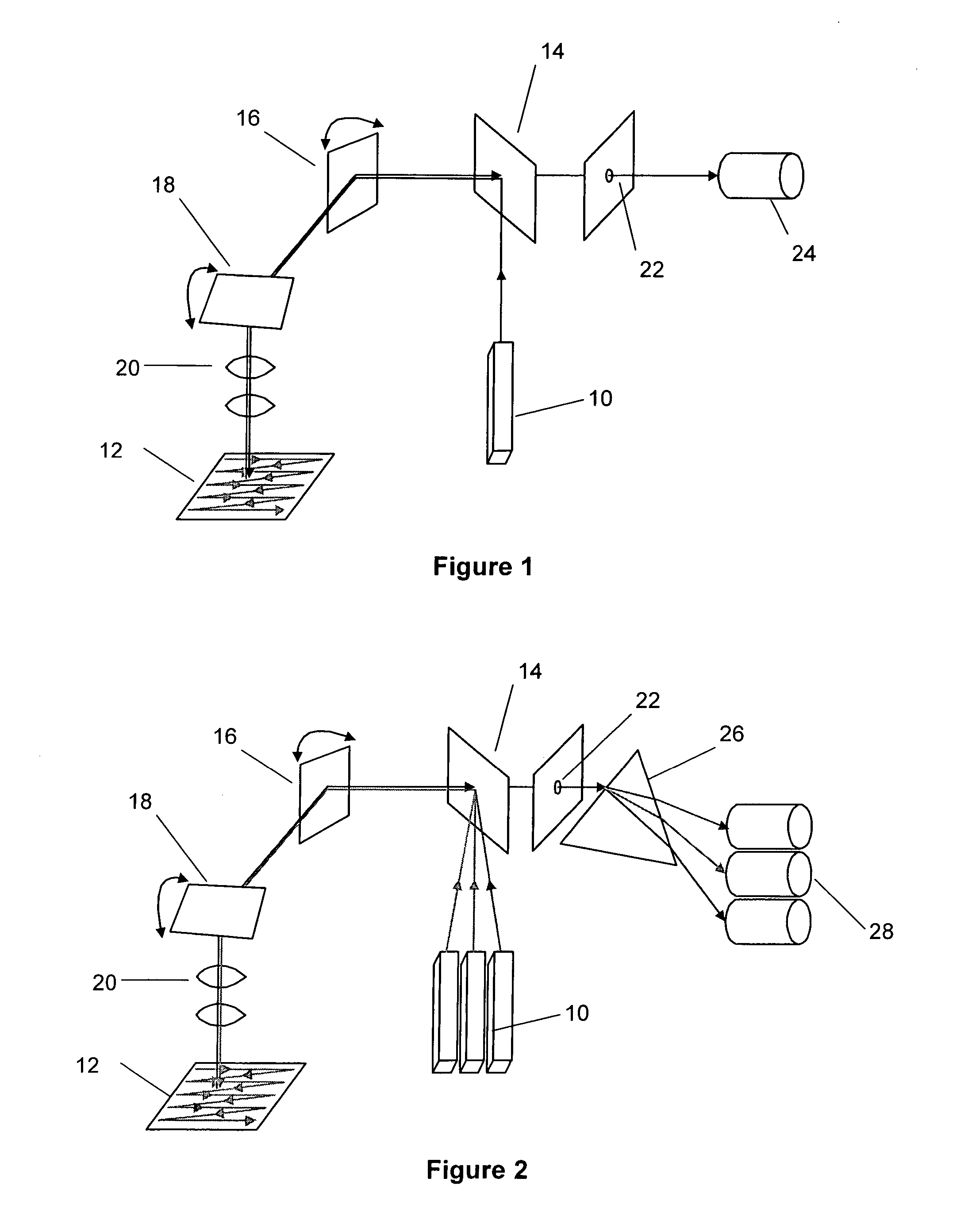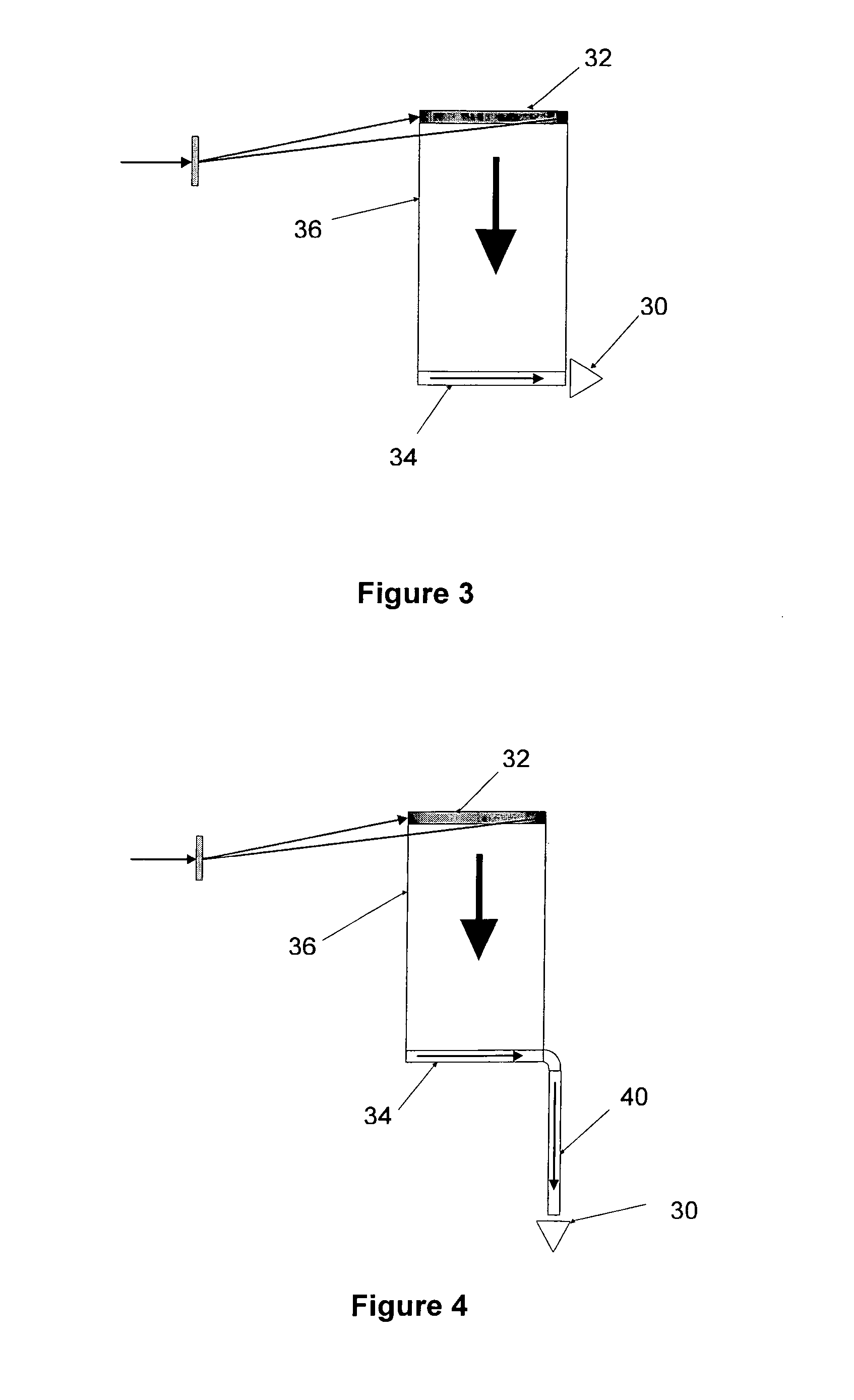System and method for time resolved spectroscopy
a time-resolved spectroscopy and system technology, applied in the field of ccd devices, can solve the problems of not meeting the timing requirement of the laser scanning system, poor temporal resolution of the system, and much slower process, and achieve the effect of increasing the sampling speed and sensitivity
- Summary
- Abstract
- Description
- Claims
- Application Information
AI Technical Summary
Benefits of technology
Problems solved by technology
Method used
Image
Examples
first embodiment
[0025] The basis of the first embodiment uses the “kinetic mode” concept. The mode of operation is as follows. As the scanning system scans across the sample, spectra are collected and stored within the storage region (e.g. 500 spectra). At the end of the line (i.e. when the laser reaches the boundary of the sample) the storage region is readout through the readout register and the multiplication register. The multiplication register provides almost noiseless gain within the charge domain thus allowing single photons to be detected. The readout of the store occurs as the laser returns to the beginning of the next line to be scanned.
[0026] If it is required that the whole target be sampled twice per second (500 spectra per line and 500 lines) and that half of the time is used to reposition the scanning laser from the end of a line to the beginning of the next, then this implies a time available to acquire one spectra is 1 microsecond. By the time the scan reaches the end of each line...
second embodiment
[0027] In order to minimise the data rate per output, multiple multiplication registers and outputs can be employed, as in the case illustrated in FIG. 5, which shows four multiplication registers and output amplifiers. In practice any number of registers can be employed. The output from the device may be simplified by the use of a multiplexer to recombine the outputs. With four multiplication registers, as shown, each multiplication register multiplies charge for a portion of the total photosites (and hence a portion of the total spectrum), in this case a quarter each. So, each multiplication register now only needs to be clocked at a quarter of the clocking speed of the arrangement of FIG. 4, namely 100 MHz÷4=25 MHz. This is a realistic and achievable speed with the result that the signal may be processed in the time available.
third embodiment
[0028] We have appreciated that the use of the store in FIG. 5 can be applied if there will be a time when spectra is not collected. For example, when the laser repositions from the end of one line to the beginning of the next. This time may not always be available. Therefore the following architecture and mode of operation is proposed in relation to a third embodiment shown in FIG. 6. The proposed device consists of an optically sensitive region 32 (made up of a small number of rows, typically one, and a number of columns, typically 96), an optically opaque region 36 into which the signal from the gathered spectra is transferred (this region may be omitted), a number of readout registers 34 and the same number of multiplication registers 40 and charge to voltage output amplifiers 30 (typically 8). A typical number of elements in each readout register is 12 and the typical number of elements in the multiplication register is 500-600. The multiplication registers are clocked at a pix...
PUM
 Login to View More
Login to View More Abstract
Description
Claims
Application Information
 Login to View More
Login to View More - R&D
- Intellectual Property
- Life Sciences
- Materials
- Tech Scout
- Unparalleled Data Quality
- Higher Quality Content
- 60% Fewer Hallucinations
Browse by: Latest US Patents, China's latest patents, Technical Efficacy Thesaurus, Application Domain, Technology Topic, Popular Technical Reports.
© 2025 PatSnap. All rights reserved.Legal|Privacy policy|Modern Slavery Act Transparency Statement|Sitemap|About US| Contact US: help@patsnap.com



